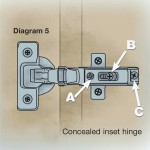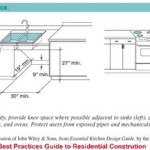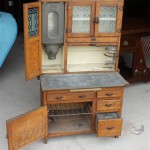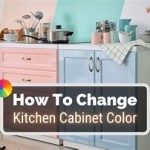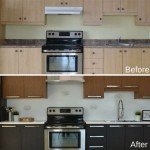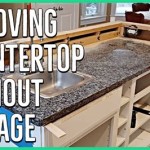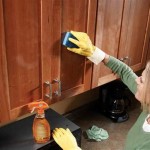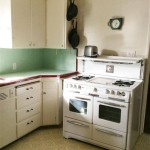Understanding Kitchen Cabinet Cornice Profiles
Kitchen cabinet cornice profiles, also known as crown molding, are decorative trim elements that add a sophisticated and polished touch to kitchen cabinetry. These profiles are typically installed at the top of cabinets, creating a seamless transition between the cabinets and the ceiling. They come in various materials, styles, and designs, providing a wide range of options to complement any kitchen aesthetic. Understanding the different cornice profiles available can help homeowners choose the perfect accent for their kitchen design.
The Purpose of Kitchen Cabinet Cornice Profiles
Kitchen cabinet cornice profiles serve several practical and aesthetic purposes. Firstly, they help to conceal any imperfections or gaps between the cabinets and the ceiling. These gaps can occur due to uneven walls or variations in cabinet height. Secondly, cornices create a more finished and polished look, adding visual interest and elegance to the kitchen space. They also help to define the cabinetry and make it appear more integrated with the overall room design.
Cornices can also contribute to the overall ambiance of the kitchen. For example, a simple, clean-lined cornice can create a contemporary feel, while a detailed and ornate cornice can add a touch of traditional or Victorian charm. The choice of cornice profile can also affect the perceived size and scale of the kitchen. A larger, more pronounced cornice can make the kitchen feel more spacious, while a smaller, more delicate cornice can create a cozy and intimate atmosphere.
Common Kitchen Cabinet Cornice Profile Styles
The style of kitchen cabinet cornice profiles can be categorized into several broad classifications based on their design and visual appeal:
1. Simple Profiles
Simple profiles, like those with a flat or subtle curve, are ideal for modern kitchens. These profiles are clean and uncluttered, adding a touch of sophistication without being overly ornate. They are also easy to install and maintain, making them a popular choice for homeowners who prefer a minimalist aesthetic.
2. Detailed Profiles
Detailed profiles, characterized by intricate carvings, ornate details, and multiple layers, are ideal for traditional or Victorian kitchens. These profiles add a touch of grandeur and elegance to the cabinetry, making them feel more substantial and luxurious. However, they can be more intricate to install and may require professional assistance.
3. Transitional Profiles
Transitional profiles offer a balance between simplicity and detail. They typically feature subtle curves, subtle ornamentation, and a blend of traditional and contemporary elements, making them suitable for a wide range of kitchen styles. These profiles can seamlessly integrate with both modern and traditional elements, providing a versatile and harmonious aesthetic.
Considerations for Choosing Kitchen Cabinet Cornice Profiles
Several factors should be considered when choosing the perfect cornice profile for your kitchen:
1. Kitchen Style
The style of your kitchen will heavily influence the choice of cornice profile. If your kitchen is modern, a simple and contemporary profile would be most appropriate. For a traditional kitchen, a more detailed and ornate profile would be a better fit.
2. Cabinet Style
It's crucial to select a cornice profile that harmonizes with the style of your cabinets. For instance, shaker cabinets would pair well with simple profiles, while ornate cabinets would benefit from a more elaborate cornice.
3. Room Size
The size of your kitchen can also impact the choice of cornice profile. A smaller kitchen may benefit from a smaller, more delicate profile to avoid overwhelming the space. Conversely, a larger kitchen can accommodate a more pronounced and detailed cornice.
4. Budget
The cost of cornice profiles can vary depending on the material, style, and complexity of the design. It is essential to consider your budget and choose a profile that fits your financial constraints. Solid wood cornices are typically the most expensive option, while MDF (Medium-Density Fiberboard) or polyurethane are more affordable choices.
Kitchen cabinet cornice profiles are an excellent way to elevate the aesthetics of any kitchen, adding a touch of sophistication and charm. By considering factors like kitchen style, cabinet style, room size, and budget, homeowners can choose the perfect cornice profile to complete their dream kitchen design.

Solid Oak Cornices Pelmets L Kitchen Wood Cabinets

Solid Oak Cornices Pelmets L Kitchen Wood Cabinets

White Kitchens Large Crown Molding Google Search Kitchen Cabinet Soffit

10 Types Of Kitchen Cabinet Molding For Your Home

A Picture To Ponder Kitchen Cornice Storied Style

Accessories And Extras To Match New Kitchen Cabinet Doors Homestyle

Common Kitchen Design Terminology Explained Bentons Kitchens

Kitchens4u Ie Luxurious Fitted Painted Replacment Kitchens

Panels Accessories Kitchen Units Diy Kitchens

Wren Kitchens How To Fit A Kitchen Cornice Installation Guide
Related Posts

